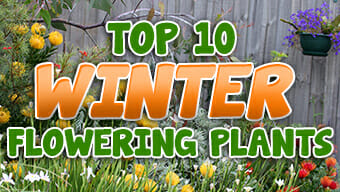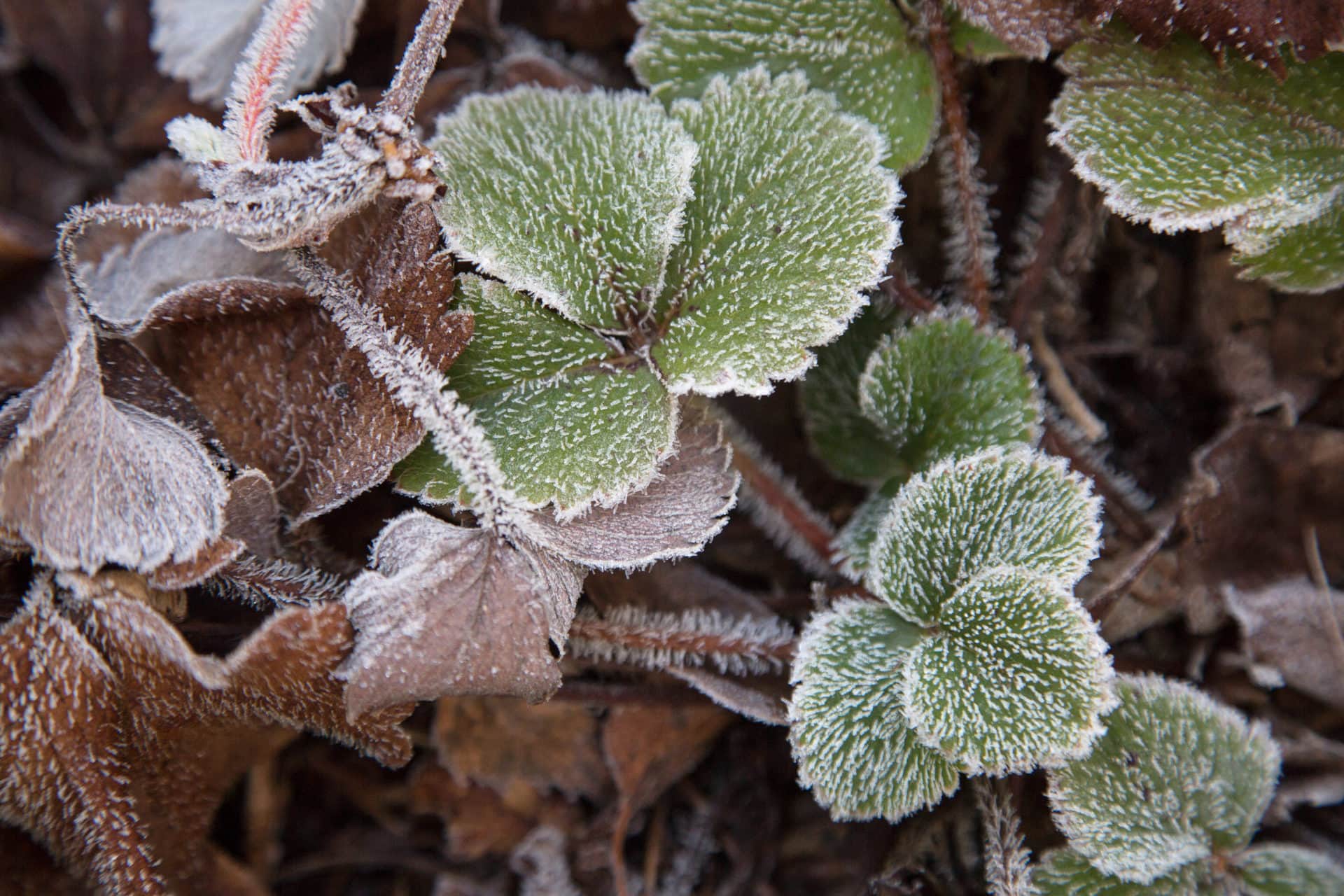
Frost on Strawberry Leaves
On still, cold nights, frost forms on our lawns, windscreens and makes our early morning starts even more difficult, particularly getting out of bed!
In May, frost really only forms in regional areas and the very outer suburbs of Melbourne, where it gets cold enough to form ice. Conditions have to be still with no cloud, and temperatures that drop below freezing.
Cold air is heavier than warm, so frost stays low to the ground and often rolls downhill, pooling in low points or gullies. Hedges and fences can catch rolling frost down a slope, which can cause a rather frosty spot.
How does frost form?
Frost forms from water vapour in the air, coming in contact with an object that is below freezing temperature.
So basically, when the moisture in the air touches a freezing cold windscreen, the moisture sticks to the windscreen and turns to ice!
When it comes to our plants, they expel energy continuously through the day and the night. Energy is warmth! During the day, their expelled energy is replaced by radiant heat from the sun, but at night time they become cooler as their warmth is not continually replaced. When the plant cools enough to get to freezing temperatures, frost can then form on its leaves.
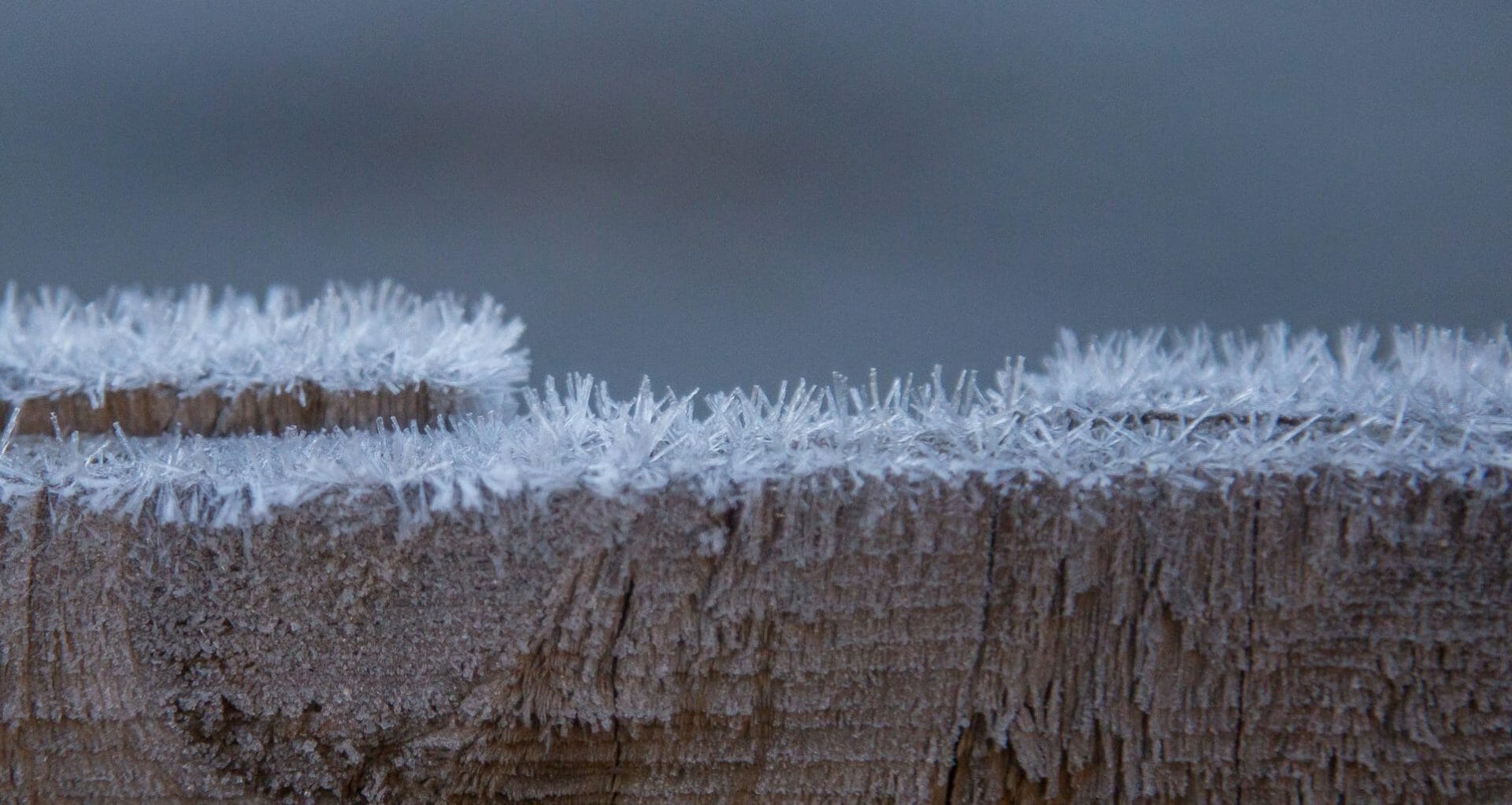
Frost on a fence in Trentham
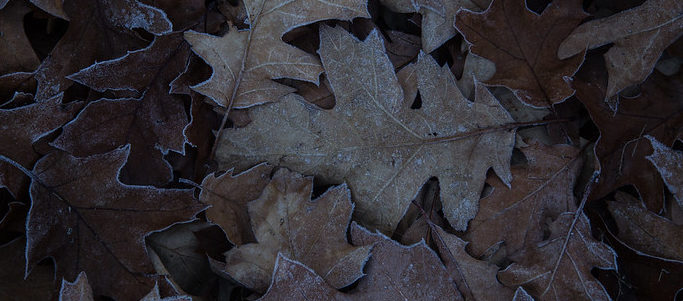
Frost on a fence in Trentham
You may notice under large trees there is little to no frost. Large trees shelter the plants and grass underneath. Their canopy radiates energy downward from the underside of their leaves, as these “breathe out”. This expulsion of energy keeps the area under the tree warmer for longer during the night. This is why planting your more frost-sensitive plants under trees and shelter can help protect them from frost.
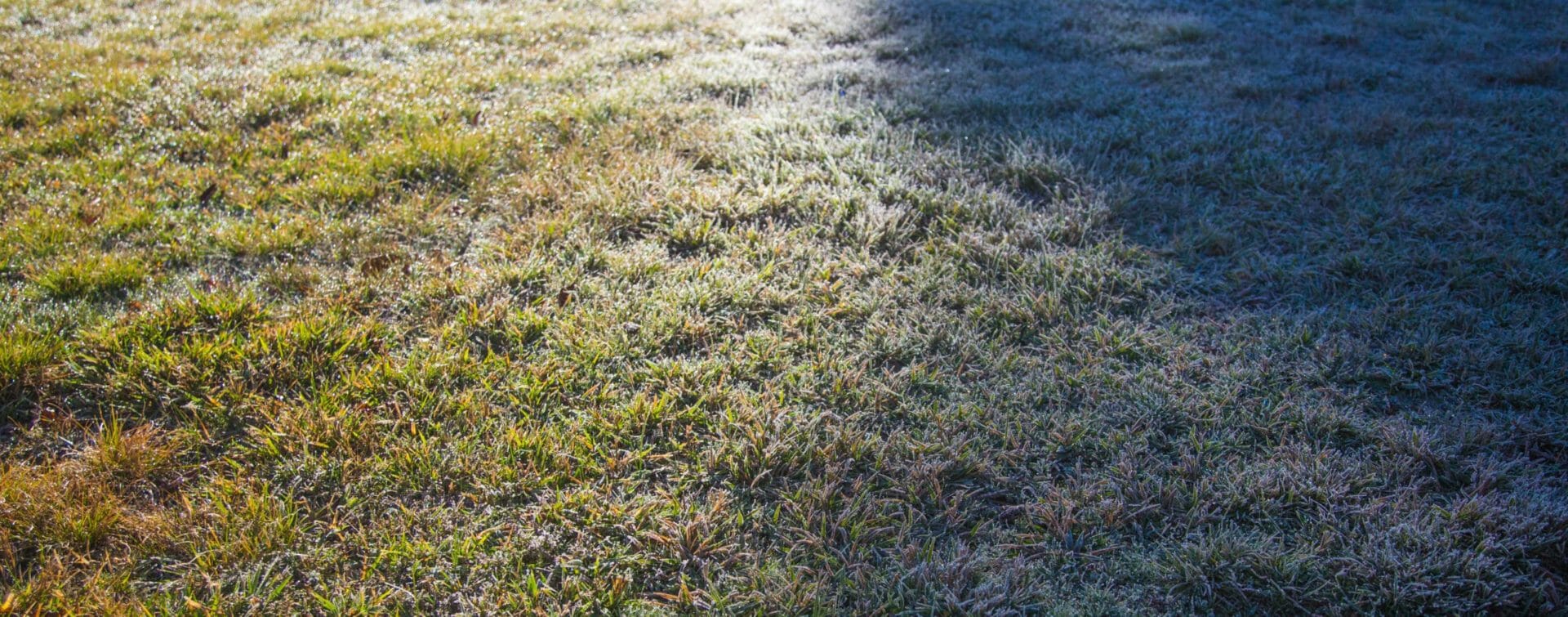
Sun melting the frost, and the shade sheltering it
Some plants can handle frost better than others. The moisture inside of the plant’s cells freeze and, like all frozen water, it expands, which can cause stress on the cells and therefore damage to the plant. When the ice is quickly thawed by the morning sun, it causes the most damage to the plant.
If your plants have been damaged by frost, don’t cut off the damaged foliage until the frosts have finished as this dead foliage will actually act as protection for the future frosts. Frosts usually finish by the end of September, though in some areas it finishes by the end of August.
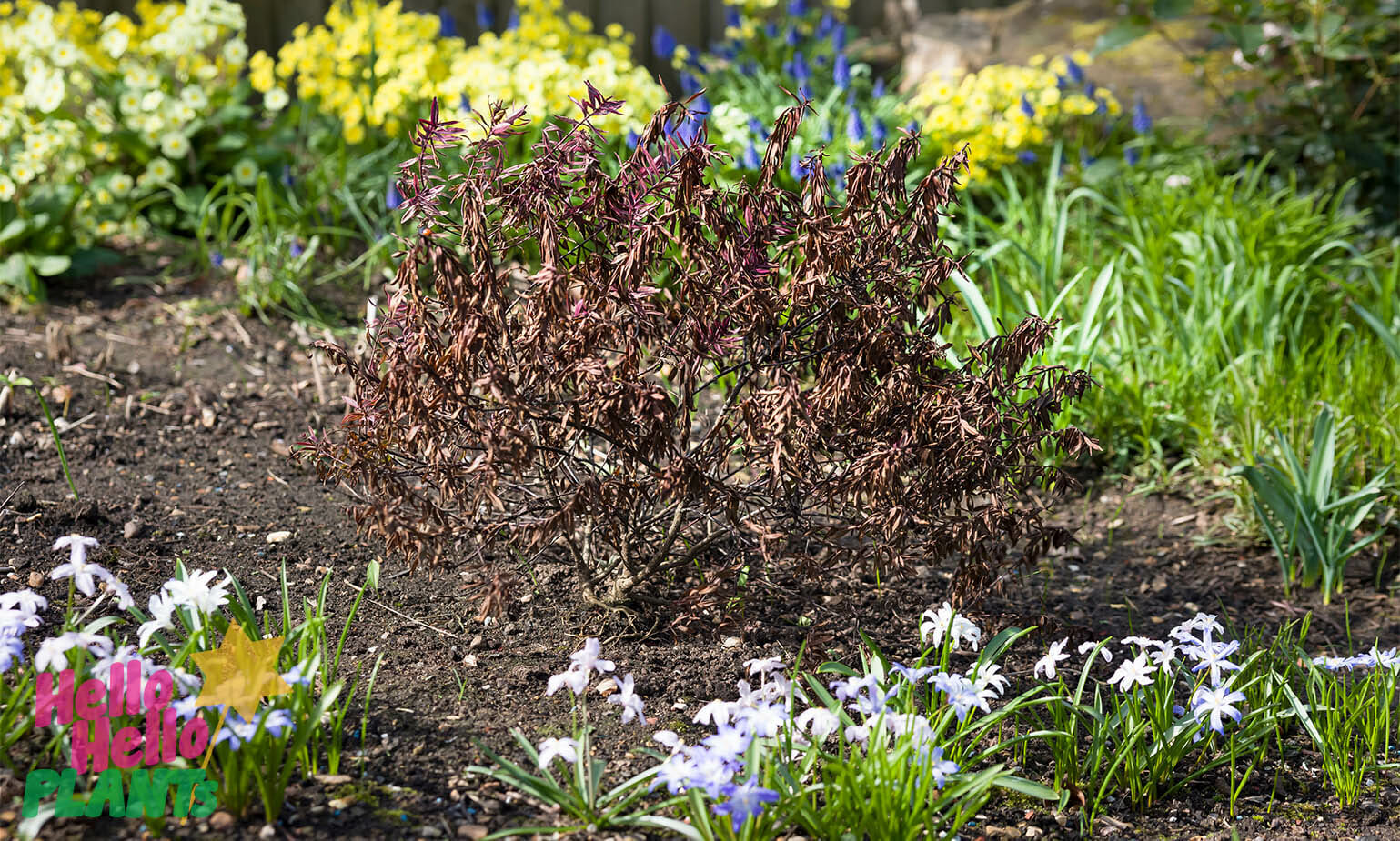
Frost Damaged Hebe Plant
The saying usually goes ‘Plant your tomatoes after Grand Final Day’ and it’s still quite relevant!
Frost Tolerant Vs Frost Hardy
Frost-tolerant plants will survive a day or two of frost and temperatures down to -5C. They might look a bit sad afterwards but they’ll pull through and grow back once it gets warmer. Frost-hardy plants on the other hand, will survive several days of frost and snow, and temperatures down to -10C, and they’ll come out looking fine.
Even frost tolerant plants need to be protected from frost if they are still small or recently planted. Once established after a year or two, they will be able to tolerate frost with no issues.
How to protect your plants from frost damage
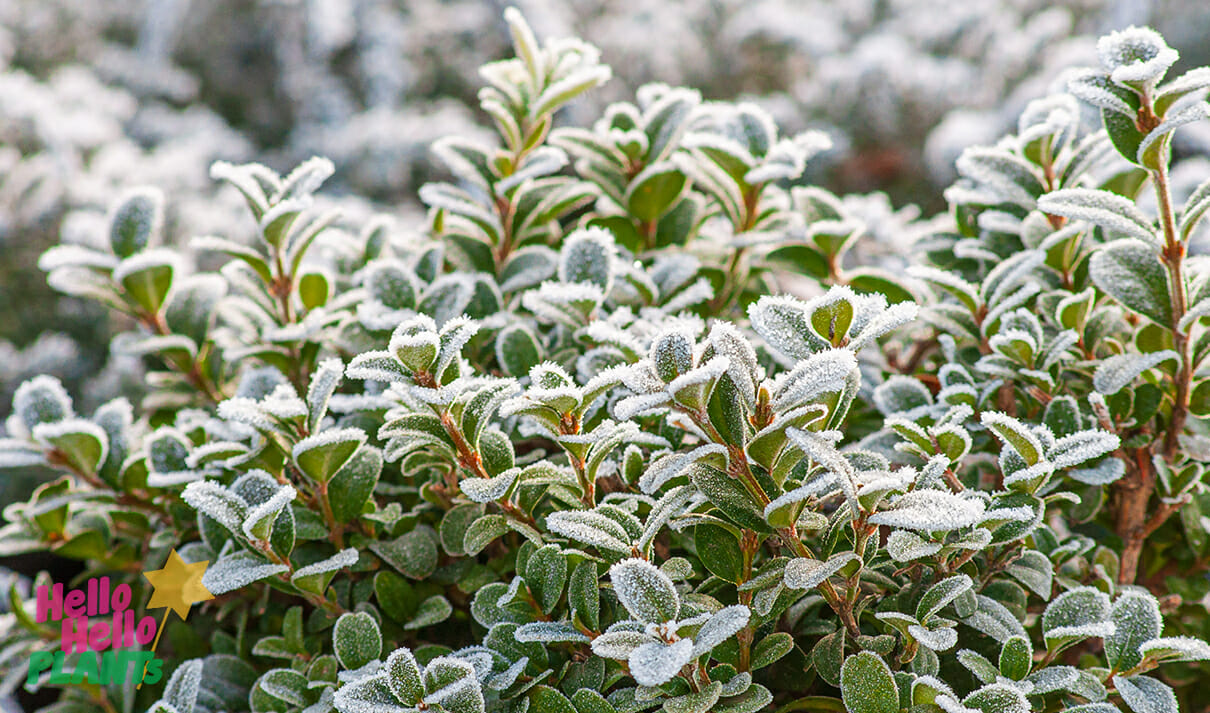
One question we get asked a lot in the nursery is how do I deal with the frost killing my plants? Luckily there are solutions to this bitter problem.
Cover your plants
Frost-sensitive plants can be protected from the cold by covering them with sheets or plastic, making sure that the material does not touch the foliage. If it does, the cold on the outside of the material can transfer through touch to the leaves.
Create a framework over the plants that the sheet or plastic can be draped over.
If you can’t create the framework, still cover the frost-sensitive plants as any protection is better than none.
And make sure to remove them again the next morning!

Watering
Lightly water your plants before sunrise by a sprinkler system (or by hand if you’re really keen!) This can prevent frost from forming. You can lightly water frost affected plants, which gently thaws the ice, reducing the damage from the frost.
Plastic Sleeves
For frost-sensitive saplings and trees, the most common form of protection are protective sleeves and stakes. Sleeves are used to also protect from wildlife, bad weather and you don’t have to remove them every morning like you would with sheets. They also allow more airflow which is crucial when avoiding frost.
Airflow
Make sure there is adequate airflow around your plants. Where cold air can sit is where frost will form.
Weeds and grass, hedges, fences, rock walls can all create an ‘air dam’ where air flow is stifled and therefore frost will occur.
Move your plants
If your plants are potted, you can easily move them out of harm’s way! Keep them on the patio or under some sheltered spot until all danger of frost has passed.
For more on frost and winter planting, check out our Top 10 articles below!
Sign up for our newsletter below
We will send you gardening tips, great deals, and exclusive giveaways. Happy Gardening!








